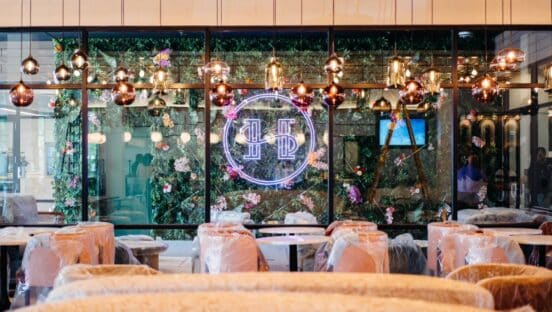Peet’s Coffee & Tea Inc., (Nasdaq: PEET – News), a coffee and tea company in the U.S., yesterday announced that its innovative new artisan roastery has been awarded LEED Gold level status by the U.S. Green Building Council (USGBC). Developed by USGBC, LEED is the nationally accepted benchmark for the design, construction, and operation of high-performance green buildings. Peet’s Alameda coffee roastery is the first LEED certified coffee roasting facility in the U.S. and the first LEED Gold certified building in the city of Alameda, California.
In a brief commemorative ceremony yesterday, Peet’s, the USGBC, and other partners unveiled a LEED Gold plaque and acknowledged those involved in bringing the project to fruition. Speakers at the ceremony included Peet’s CEO and pPresident Patrick O’Dea; Peet’s Vice President of Operations and Information Systems Jim Grimes, who spearheaded the LEED certification for Peet’s; USGBC Co-Founder David Gottfried; Joe Ernst of SRM Associates, the project developer and coordinator of the LEED design and construction team; and Andrea Traber of KEMA Green, Peet’s LEED consultant on the entire project from development and design to construction, commissioning, and LEED application process.
“Peet’s took a LEED certified approach to the design and construction of its roasting plant in keeping with the company’s guiding principle to positively contribute to the environment wherever the company does business,” says Patrick O’Dea, president and CEO of Peet’s Coffee & Tea. “For the past 42 years, Peet’s has been dedicated to sustainable practices, and this building is yet another example of that commitment.”
LEED promotes a whole-building approach to sustainability by recognizing performance in five key areas of human and environmental health: sustainable site development, water savings, energy efficiency, materials selection, and indoor environmental quality. To achieve LEED certification, the Peet’s Coffee & Tea roastery proved sustainable design and construction in these five areas. LEED was established for market leaders to design and construct buildings that protect and save precious resources while also making sound economic sense.
“Peet’s is to be commended for achieving LEED Gold certification for its roastery,” says Rick Fedrizzi, president, CEO, founding chair, U.S. Green Building Council. “This facility is a showcase for high-performance, energy-efficient space and healthy employees, and it serves as an inspiration for the community and the industry.”
LEED certification of Peet’s roastery is based on a number of green design and construction elements, including:
* A significant improvement in the work environment for the company’s
roastery employees with ample work spaces, fitness room, lockers,
showers, bike and automobile parking and expansive lunch/break room
* Use of natural light and the latest lighting technology to reduce
energy consumption by 40 percent
* Total energy savings features beat California Title 24 by 32
* Landscape design, irrigation system and the use of efficient
fixtures (like waterless urinals) to reduce water usage by more than
50 percent
* Redesigned heat recovery during roasting to reduce gas usage by over
85 percent
* Environmentally-sensitive HVAC systems to reduce greenhouse
emissions
* Significant amounts of recycled content/materials used during
construction
* Waste diversion to recycling of over 75 percent during construction
* Close proximity to public transportation for employees and
preferential parking for fuel-efficient vehicles and bicycle storage



